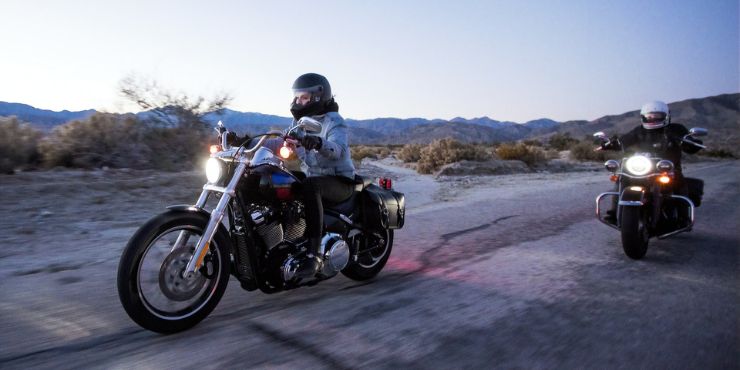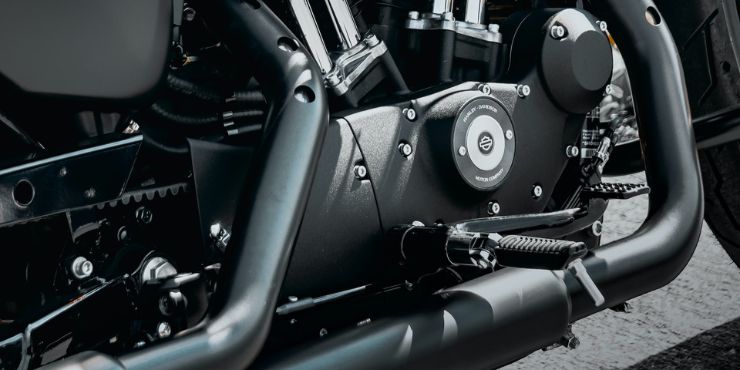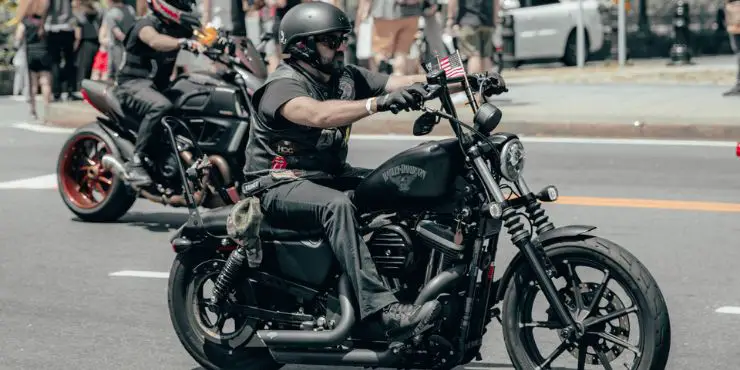Are you a beginner Harley-Davidson biker, and you don’t know how to shift gears on your bike? If so, then you’re definitely in the right place.
To shift gears on a Harley-Davidson, pull in the clutch, use your left foot to press the shift lever, and release the clutch while rolling on the throttle. Shift up to increase speed and downshift for slowing down or stopping.
In this article, you’ll get to know all about shifting gears on your Harley-Davidson bike, how do motorcycle gears work, how to shift gears on a Harley-Davidson motorcycle, the clutchless gear shifting technique for advanced riders, and more. Stick around to know all the answers that you’re looking for.
How do Harley-Davidson motorcycle gears work?
Not many experiences are quite as exhilarating as riding a Harley-Davidson bike. While it seems easy to learn how to ride a bike, shifting gears is something that many beginners struggle with. Although there have been many automatic and semi-automatic bikes introduced into the market in the past few years, bikes traditionally come with a manual transmission. Knowing how to properly shift gears on a bike smoothly can make your riding experience a lot more exciting.
Motorcycles having manual transmissions typically have 4-6 gears, depending on the size and make. Meanwhile, low-powered bikes might have as few as two gears. You’ll be engaging the gears with the lever on the left pedal, which will move the forks inside the transmission. To shift the gears up/down, you’ll have to press down the clutch lever using your left hand to disengage power from the engine and then transfer it to the transmission.
Once you’ve selected the gear, release the clutch to re-establish the connection with the crankshaft and for your bike to gain momentum. With practice, it’ll become second nature to coordinate the clutch and gear shift. You’ll eventually be able to start shifting gears on your bike without stalling.
The basics of motorcycle gears
For bikers who are new to riding, the most intimidating part might be learning to shift gears. If you’ve previously driven a car with a manual transmission, the process will be similar for a bike too. Here’s a breakdown of different concepts of shifting that you need to know about.
Locate the controls
The clutch is essentially the lever present on the left of the handlebar. Squeezing the clutch will disengage it and disconnect the drivetrain. Meanwhile, the throttle is the grip present on the side of the handlebar. Rotating it backward increases the throttle, whereas rotating it ward the front decreases the throttle. The shift lever is present on the front of the left footrest. Pushing the shift lever completely down selects the first gear. Half a click up from there will be neutral, and a full click up is second.
Shifting into the first gear
Before you shift to the first gear, it’ll be good to learn where the clutch engages. You should squeeze the clutch lever and then put your bike into neutral. Start the bike’s engine while squeezing the clutch, then push the shift lever into the first gear.
Slowly, release the clutch lever until your bike starts moving. This will be the engagement point. To begin riding in first gear, you should release the clutch slowly while adding throttle in a gradual manner. If you release the clutch too quickly, it can cause the engine to stall or lug. Meanwhile, adding too much throttle could cause the rear wheel to spin.
Upshifting in your bike
Once you’re in the first gear, keep adding more throttle until it is time to shift to second. Determining when to shift can vary on the bike, travel speed, and road conditions. While most bikes generally shift at 5,000 to 7,000 RPMs, it’ll be best to judge by the feel and sound of the engine. As you start moving faster, the pitch will increase. When the pitch is high, it’ll be time to shift. If you’re shifting too soon, you’ll hear the engine start struggling, which helps in learning the correct shift points.
When it is time to upshift, release the throttle, squeeze the clutch, and then move the shift lever to the next gear. Then, add throttle while releasing the clutch lever for a smoother shift.
Downshifting in your bike
As you’re beginning to slow down or stop, you’ll need to downshift. Once the pitch of the engine drops, and it starts struggling, it’ll be time to do so. For switching into a lower gear, just release the throttle, squeeze the clutch, and then push down the shift lever. After that, increase the throttle to raise the engine speed before slowly releasing the clutch. When you’re downshifting, the idea is to raise the engine speed temporarily for matching the bottom of the higher gear. This is done before you allow it to slow down, smoothening the transition and preventing the rear wheel lockup.

How to shift gears on a Harley-Davidson motorcycle having a manual transmission
A manual transmission will require you to shift the gears manually with the clutch, throttle, and gear level to keep the bike moving. The gear pattern for manual bikes is to press down for the first gear. Then, move up the gear lever to get the upper gears. The technique mentioned below will outline the maneuvers you’ll be using to shift gears. You should remember to perform each step slowly, as it’ll help you get a smooth transition.
Step 1
Start your bike by squeezing the clutch lever while also pressing the starter button. Check the motor console and ensure that you’re in neutral gear like you would on a manual car. After that, slowly release the clutch.
Step 2
Roll the throttle on the right-hand grip inwards for revving the bike. Then, squeeze the clutch while you’re pushing the shifter downwards for engaging the first gear.
Step 3
After that, gently release the clutch while you’re feathering the throttle to prevent stalling. As your bike starts moving, release the clutch completely before rolling in the throttle for acceleration.
Step 4
For moving up a gear, you should repeat the process by squeezing in the clutch as you’re rolling the throttle outward for reducing the speed. Instead of pressing down on the shifter, you should put your foot under it. Then, bump it up as high as it goes to engage the next gear. Each bump will move you up a gear and if you accidentally skip one, ensure that you match your speed with the gear you’ve shifted to as quickly as possible.
Step 5
If you’ve released the clutch and nothing happens, you’re likely in neutral gear. You’ll have to squeeze it and lift the gear lever once more. The neutral gear is normally present between the first and second gears. If you bump the shifter halfway while you’re on your first gear, it’ll engage the neutral gear.
Step 6
To downshift gears, roll off the throttle as you’re pulling in the clutch while pressing down on the shifter. When you’ve downshifted the gear, release the clutch slowly as you’re reducing your speed.
Step 7
If you’re slowing down or stopping, press and release the gear lever continuously while also holding the clutch until you’ve got to the first gear.
How to shift gears using the clutchless technique for advanced riders?
As you start gaining experience, you will develop skills to help you shift gears quickly without engaging the clutch. While you can easily add a quick-shifter device to your bike to upshift the gears quickly, it’ll be an expensive investment, mostly ideal for sports and race bikes. You can also mimic the quick-shifter process using the clutchless shifting technique. For doing so, you will need to be driving at full throttle. The general idea of clutchless shifting is to essentially change the gears at high speeds without slowing down.
The next step would be to pre-empt the upshift by bumping up the gear lever a bit, but not enough to engage the gear. At the same time, you should roll off the throttle marginally and then return to full throttle in quick, short movements. This action will cut off the power temporarily while allowing the lever to slip into the next gear smoothly without any loss in acceleration.
Meanwhile, downshifting at full throttle will be a significantly complicated technique. It requires a lot more practice to perform. It can be slightly dangerous at the start as you won’t be able to match the engine speed with the rear wheel speed. This can sometimes result in injuries or accidents.

Modern sport bikes feature a slipper clutch, which prevents the rear wheel from hopping when you downshift quickly and decelerate. On the other hand, the auto-blipper quick-shifter device will help you downshift while reducing the risk of locking the rear wheel.
An experienced biker can easily perform a quick, clutchless downshift by just rolling in the throttle for increasing the RPM while disengaging the clutch. Moreover, you should quickly downshift the gear before releasing the clutch. The higher RPM blends in the engine speed to the rear wheel, producing a smooth transition. Without it, the rear wheel would hop as it’s going to be faster than the engine speed.
Conclusion
Thank you for reading. Hopefully, now you know a lot more about shifting gears on your Harley-Davidson bike, how do motorcycle gears work, how to shift gears on a Harley-Davidson motorcycle, the clutchless gear shifting technique for advanced riders, and more. Shifting gears on a Harley-Davidson bike is actually very simple as long as you know the right method. Use your left hand for squeezing the clutch lever down to engage the engine, then select the correct gear before rotating the throttle lever by twisting your right wrist. Slowly release the clutch lever with your left hand while gently rotating the throttle lever. Once your bike is in motion, release the clutch and accelerate to increase speed.

